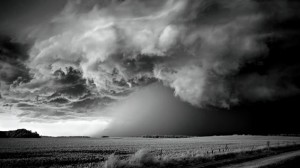New York may not have the first hanging garden, but may have the first underground garden. In October, 2012, CNN reported that New York is planning to raise 60 million dollars for developing “the world’s first underground park” at the Manhattan’s Lower East area.
In the most densely populated area of Manhattan, New York City, most people works and lives at high-rise buildings; yet, there is a need for fresh air and relax space. To cope with the city’s needs, two engineers, Dan Barasch and James Ramsey of RAAD studio came up with the LowLine Park proposal earlier in February 2012 at the Kickstarter campaign. The project aim to transform vacant underground space, a historical Williamsburg Bridge Trolley Terminal, which opened in 1903 and closed in 1948, into an extraordinary subterranean public park.
According to Scientific American, the two engineers aim to use a remote skylight technology, an advanced fiber-optical system, to gather sunlight and funnel them down to underground, which would provide just enough UV light to support plants growth. As the light source comes directly from the ground above, the light would change just like the natural sunlight throughout the day. This technological advancement would overturn traditional dark and humid impression of an underground space.
 This YouTube shows a video demonstration of the LowLine project.
This YouTube shows a video demonstration of the LowLine project.
A sample sized installation of this LowLine Park project has been built in the former Essex Market Building on Delancey Street for public viewing in September. As stated by Meghan O’ Rourke, an American writer of online magazine Slate, the space “feels like Alice in Wonderland looking around after her long fall into the depths of the earth. There, inside the cavernous warehouse and sustained by light cells out of “Star Trek,” is a mossy knoll, complete with a Japanese maple and a praying mantis (which Barasch and Ramsey have dubbed “Zoltan”)”.
This may be the world first underground park, however, this innovation was from the High Line Park project, which was built on an old elevated train platform in the Meatpacking District of Manhattan West side. It has brought in more than 4 million tourist attraction and 12 thousands employment opportunity since the opening of the park’s second section.
Building more accessible green space for public has been a fast-growing field in many capital cities; however, this project may not be approved by New York City councils as there are security risks associated with underground park like this. This may be a great place for homeless and illegal actions. Public support and community involvement is needed for this project to work.
Post submitted by Jamie Tsai.










